It never rains but it pours. Here is what I believe to be one of the most unique and beautiful tárogatók in existence. This is an original Stowasser instrument, made around 1902. While V.J. Schunda is generally acknowledged to be the inventor of the modern tárogató, some controversy surrounds that claim, as János Stowasser also submitted a patent for an almost identical instrument within days of Schunda’s application. However it happened, the two “S”s of tárogató represent the pinnacle of the art.
The Stowassers were a family of musical instrument makers, a bunch of brothers and sons working both in Graslitz and Budapest. They were famed for their band instruments, even inventing the Helicon in 1845. Trumpets and various brass instruments were their forté, as well as a whole family of saxophones, including a contrabass sax in Eb. But woodwinds were not unknown to them, as lovely Stowasser clarinets prove.
Sometime in the 1890s, either V.J. Schunda or János Stowasser modified the traditional tárogató along the lines of the new soprano saxophone. The original instrument was like a primitive oboe, with a double reed mounted on a thin conical pipe bearing finger holes but no keys. Schunda and/or Stowasswer made the instrument longer–in Bb–with a wider bore and a single-reed mouthpiece like the saxophone or clarinet. Various keys were added for chromatic notes, for intonation, and to extend the range downward.
But here the Schunda and Stowasser stories diverge. Schunda continued with a more conservative design, while Stowasser innovated, based seemingly on his experience and abilities as a maker of other wind instruments. More keys were added, including a double octave key in order to extend the range to the top of the second octave and beyond. Rounded keys for little fingers were flattened and rollers were added, more akin to those of the saxophone. In addition, Stowasser experimented with the bore profile, narrowing the top and increasing the bore cone angle. The acme of tárogató perfection was reached with his four ring #19865 model, which was widely copied and remains the standard design for tárogatók to this day. And while most manufacturers made instruments only in Bb, Stowasser advertised a family of seven sizes, going down to a contrabass tárogató in Eb.
Sadly, while Stowasser was a prolific maker, the Budapest factory burned down in 1946, so Stowasser tárogatók were made for only 50 years or so. While Romanian copies abound, original Stowasser instruments are still highly prized for their quality. It is possible to find them for sale, but it is difficult to find ones in really good condition. Those that exist have usually been heavily played, and are battered and worn. The wooden walls of Stowasser instruments in particular were made very thin, and many have cracked over the years, some repairable and some not.
I have a Stowasser 19865 instrument in Bb, and it is a joy to play for its ease of response, tone quality and good intonation. With that instrument I thought I was done with tárogatók, until I ran across a Stowasser that blew my mind.
In January of this year I happened to see a Stowasser advertised on eBay. The instrument appeared stunning, hardly used, with no cracks, no wear, still sporting the original lacquer finish. I tried to ignore it, telling myself that I hardly needed another one, but I kept coming back to look. Then I saw something else that I couldn’t believe–this instrument was extended one semitone to low A! I thought my eyes were playing tricks on me. But sure enough, there was a double thumb key instead of the usual single one. I had never heard of such a thing, and I still have found no other mention of another.
But something was funny–the instrument was too short. What was this? I wrote to the seller, a reputable and experienced dealer of woodwinds, and neither of us could figure out what key it was in. It took several months to solve the mystery.
Peter Hurd, of oboes.us, is one of the most knowledgeable woodwind specialists it has been my pleasure to run across. His knowledge, it seems, is exceeded only by his integrity and desire to serve his customers and their music. I let him know that I might be interested in this beautiful instrument, but only if it were playable in modern pitch. Peter immediately took it off eBay and sent it in for a complete overhaul. When it came back, he reported that the instrument was apparently in C, but that it played some 30-40 cents flat using the two mouthpieces that came with it. We both surmised that perhaps this was some special order instrument that had been made in a regional pitch. Sadly, I decided that as beautiful and unique as the instrument was, I could not spend all that money on a museum piece. I put it out of my mind.
Imagine my surprise, when some time later, I received a message from Peter: a colleague had put a different mouthpiece on the instrument, and it now played perfectly in tune in C at A=440.
Now I understood. The mouthpieces included with the instrument were traditional Bb mouthpieces, which because of their larger size made the instrument play flat. If a more modern mouthpiece would play it tune, then it should be entirely possible to modify the existing mouthpieces to also play in tune. I jumped! Peter was kind enough to send the instrument on approval.
When it arrived, I couldn’t believe how beautiful it was. To find a 110-year-old instrument in almost new condition is unusual, but to find one so rare and unique is such condition is almost unheard of. I tried it, and sure enough, it was 30 cents flat. So I popped out to the corner convenience store and bought some chewing gum. Softening it up, I put a wad in the mouthpiece and shaped it to the interior. Now the instrument played beautifully in tune!
Much as I like my Bb Stowasser, this one beats it on all counts. The tuning is excellent from top to bottom. Because of its small finger hole and the closed key below it, E is often flat. It is excellent on this instrument. Middle C# is usually flat. On this horn it isn’t. The instrument plays beautifully and solidly right to the top C, which is usually a bit sharp, but not here.
It is also surprising how a single step upwards can completely change the character of the sound. While the Bb tarogato has flavors of the Cor Anglais, the C Stowasser is bright and penetrating, much more oboe-like than its larger sibling. And to have such an instrument in concert C is anything but ‘disconcerting’–wonderful to be able to read flute and oboe parts without transposition.
Below I lay out a photo spread of this beauty, but I must make a plug here. My appreciation for Peter Hurd knows no bounds. Buying an instrument sight unseen is more often than not a disappointing experience at some level. Not this time. Peter may be in business, but he obviously loves his instruments, and his focus is on the love and not the money. If you are in the market for a double-reed instrument particularly, go visit him at oboes.us. I cannot say enough good things about my interaction with him.
*******************************
Here is the C Stowasser on top next to the Bb instrument.
The lower part of the two instruments. Note the extra key just above the tenon ring on the C instrument. This is the Bb, which would normally be on the bell.
Here is the double thumb key, and the linkages to the Bb and the extra A keys.
The top joint.
Maker’s marks on the bell, still with the original gold.
The walls are extremely thin on Stowassers, leading to a lot of cracking.
This even came with an original rosewood mouthpiece cap!
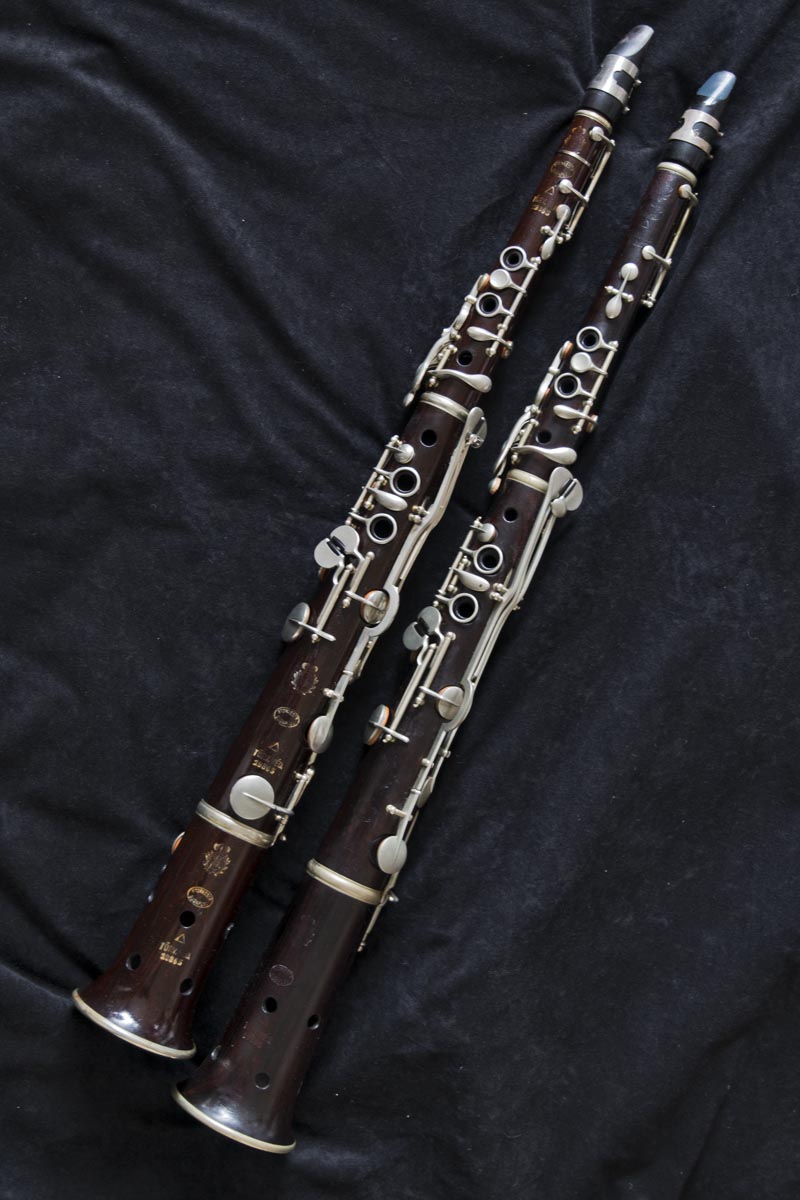
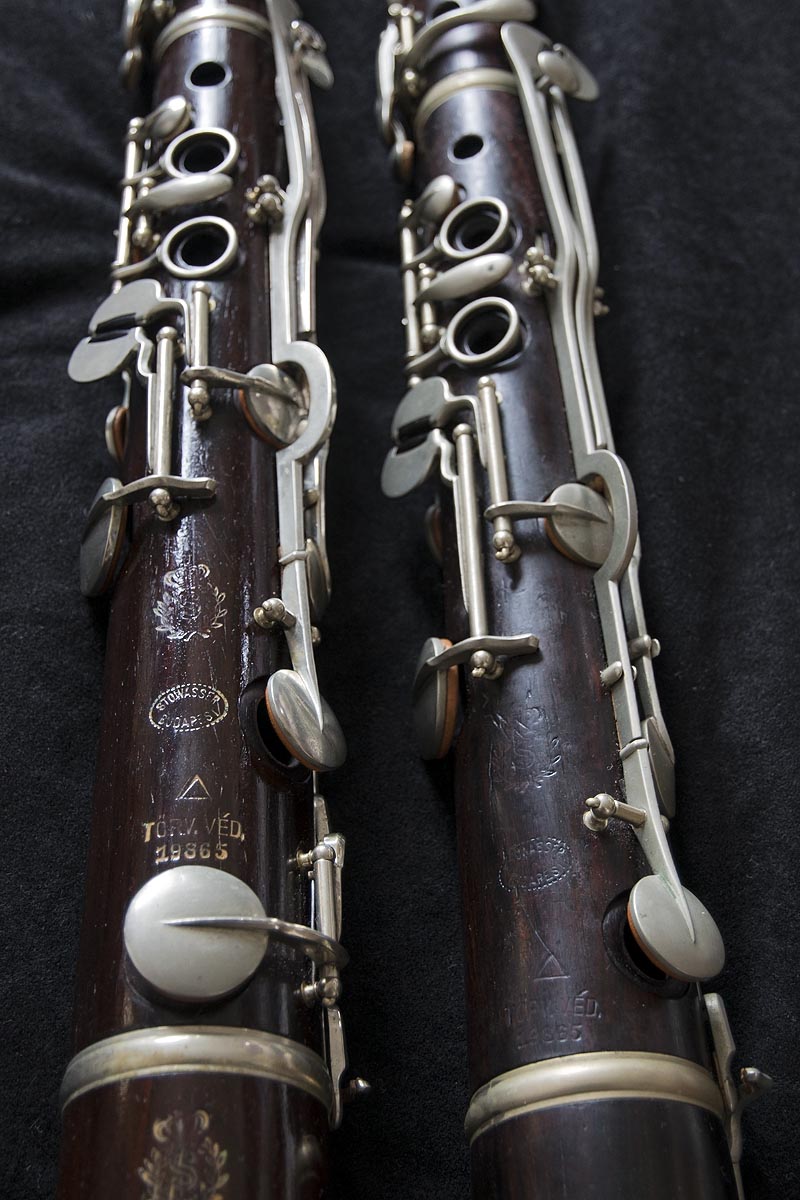
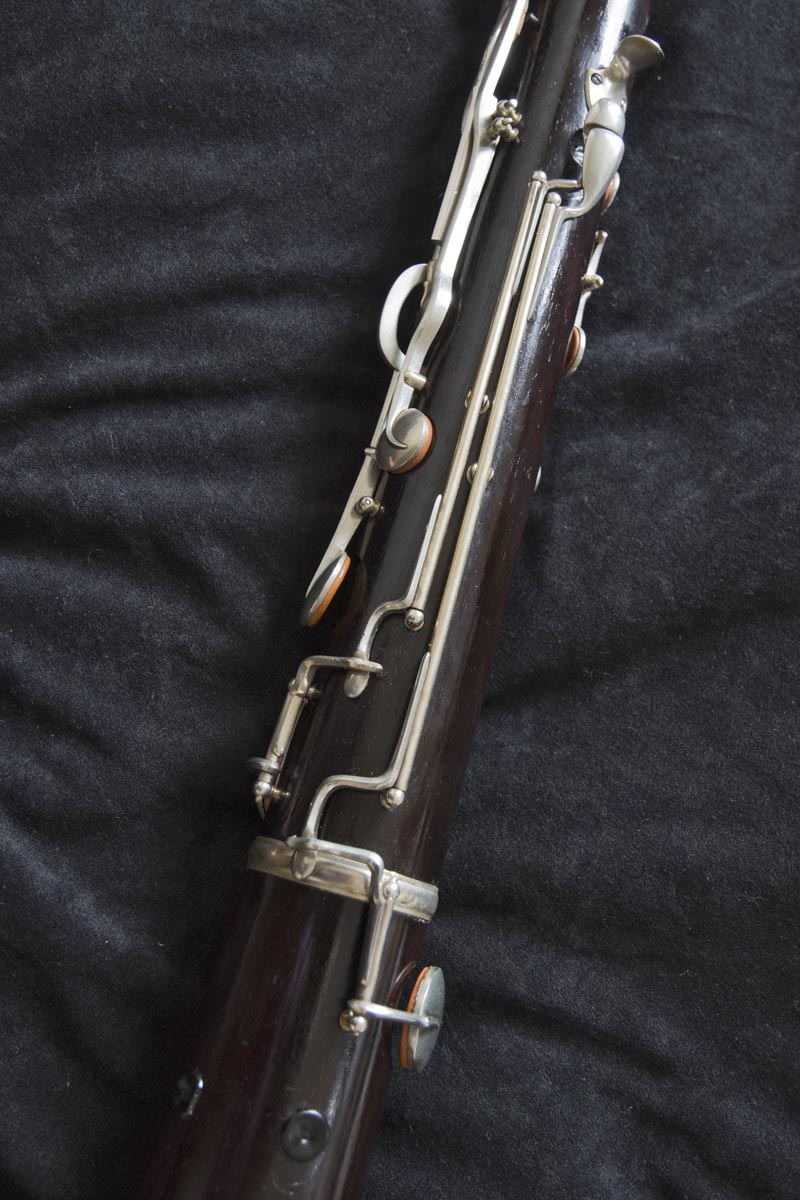
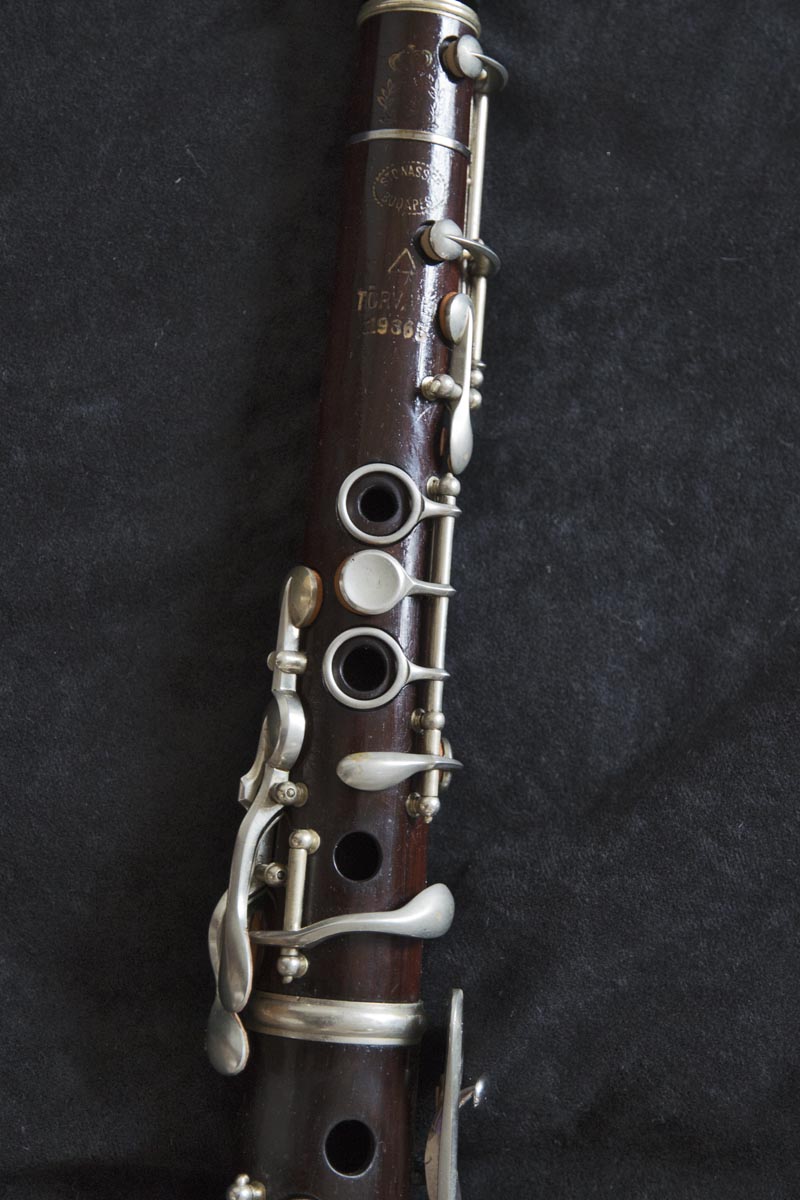
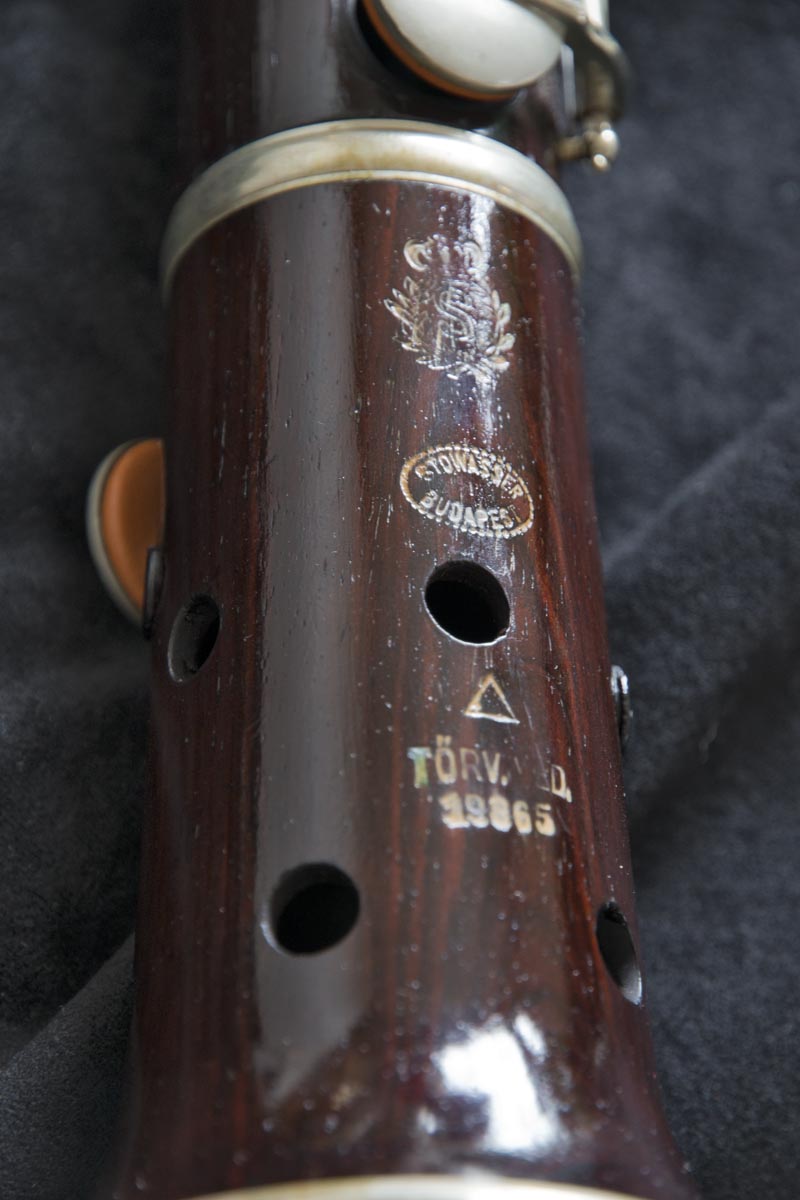
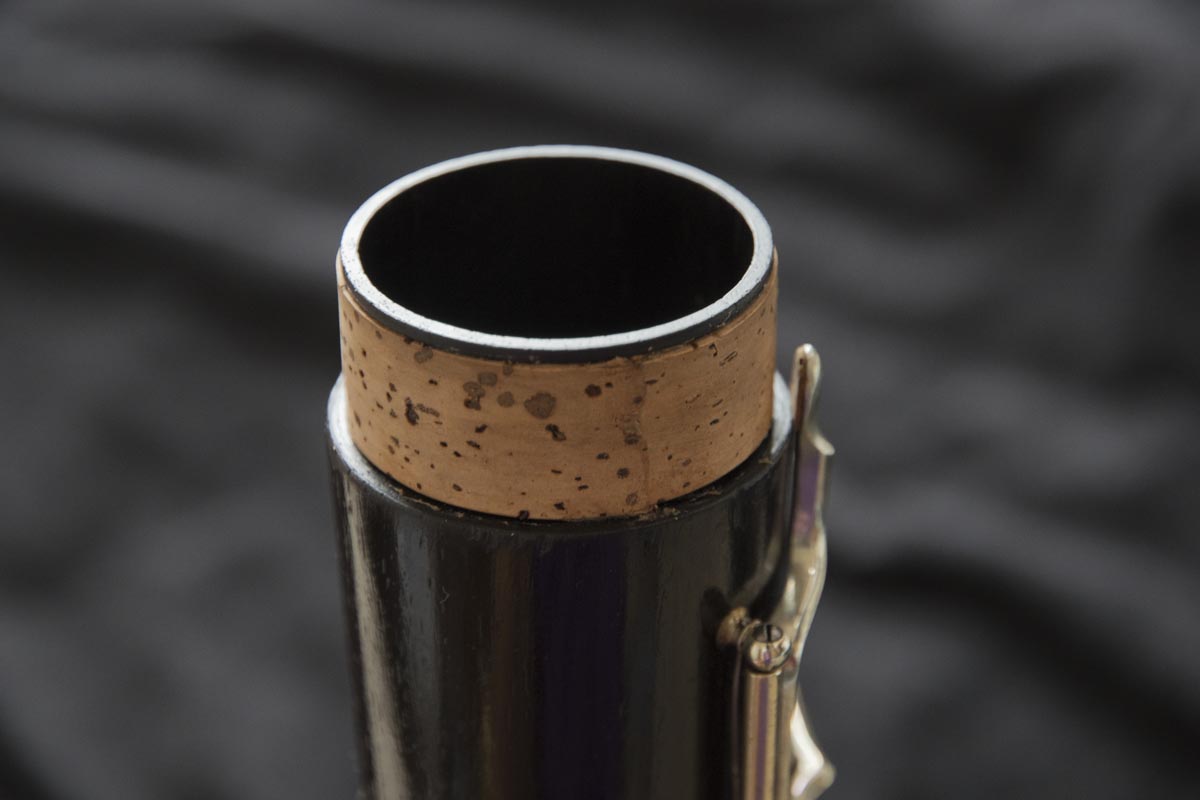
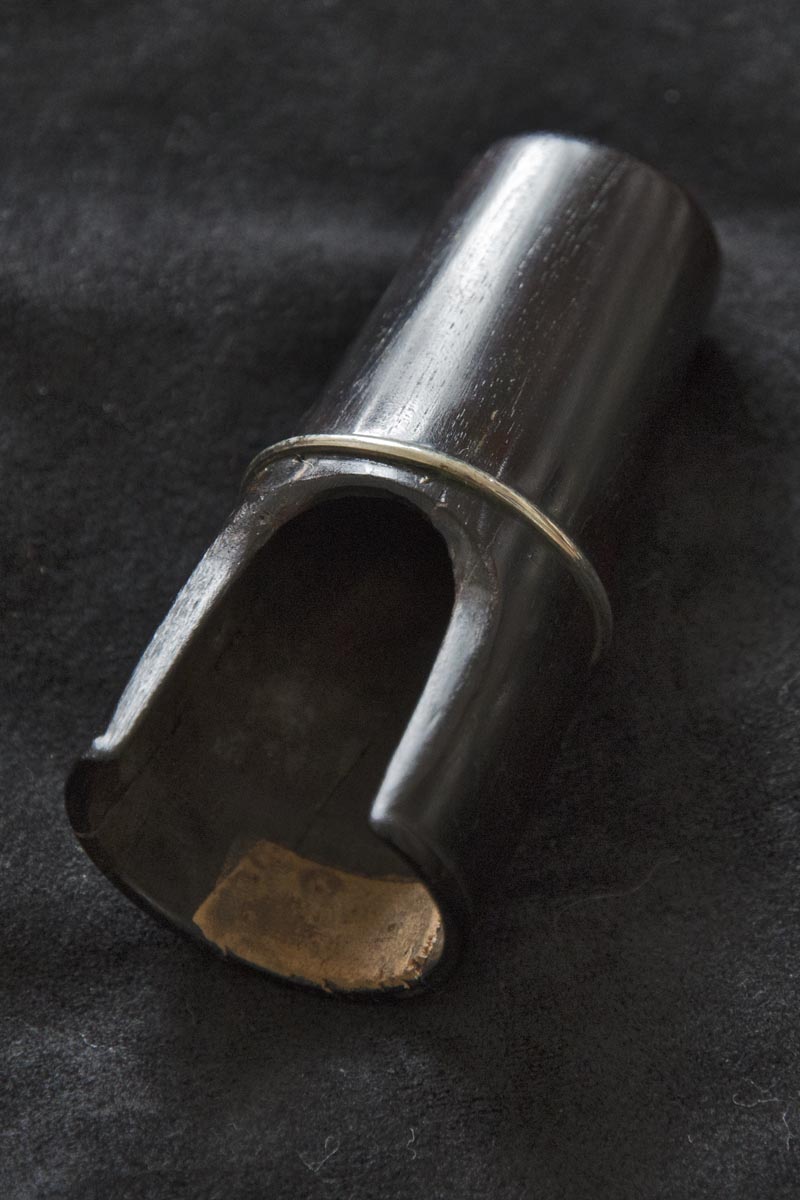
2013/08/12 @ 06:57
It certainly is a big surprise seeing such a special edition. I have researched the instrument since the start of 11thmuse.com (1997) and I have never seen one like this before. Congratulations! And what’s more, it looks like new old stock.
2013/11/01 @ 01:54
Stowasser tarogatos burned down in 1946 in The Second World War. It is best in tarogatos even if nowadays some tarogato makers “bought” the patent of Stowasser. I think they are destroying a legendary brand ! The new instruments will never sound like the original ones, like none of the violins have a Stradivarius quality. More, today the wood of Stowassers can not be found ! I can say more Stowasser tarogatos you have more you want, the are unique from all points of view! Stowasser made a family of tarogatos – in C, A, B , and also a tarogato bass which is amazing, but as I know there is only one in a museum in Budapest , and copied by some makers ! Here is a piece of my knowledge about tarogatos ! Best wishes for all tarogato (taragot) lovers !
2013/11/19 @ 02:34
Actually it seems that the Stowasser factory burned down in 1917. I have only seen pictures of the new “Stowassers”. I do not know how good they are, but I do not like that they take the original name, because they are nothing like the originals. Actually the wood does not make much difference, but the originals are excellently designed and crafted instruments that deserve their high reputation. My Schunda tárogató is quite nice, but in terms of playability the Stowassers are in a different league.
2014/10/12 @ 19:54
In Hungary Gregus Pál manufactures the copies of soprano and even of BASS Stowasser taragotes. He also produces the copies of a Shunda Alto taragote found in Austria.
Actually there were some bass Stowasser instruments (Eb Alto and Bb Tenor as well) found in America, too. We are happy to see, that among them there is a Stowasser Alto Taragote. With the help of Scott Robinson Gregus Pál started the innovation process of this intrument as well, so in some months time he will be able to produce great quality Stowasser Alto copies besides the Shunda ones.
2014/02/16 @ 05:28
It is of dubious appropriateness for the new company to take the name of Stowasser, but in fact the new instruments of this company and others in Hungary are actually of a similar quality, perhaps better in some regards.
2014/05/23 @ 18:25
Hi Toby,
Thanks so much for putting up such a tremendous amount of info on these lovely instruments. I’m on the search and have been sent a pic of two-ring Bb Stowasser and would like your view on authenticity or otherwise (no court cases will ensue if subsequently proven erroneous!).
May I email you direct?
Many thanks
Al
(U.K.)
2015/11/28 @ 20:04
Hi Toby, if you are ever thinking of selling one of your tarogato please just email me. crys_27007@yahoo.com
2017/08/15 @ 07:21
Hello Toby, I’ m looking for a good tarogato …if you want to sell one please let me know.
Tks George
2017/08/28 @ 23:56
Hi George,
How much are you willing to spend? I’m toying with the idea of selling one of my two Stowasser Bb tarogatos, since I also have a Hammerschmidt and I really don’t need them all. I paid $3500 and I’m putting some money into it, so it would be about $4000 all told. The good side is that it plays beautifully in tune and no cracks at all in the wood. It was bought in NY for use on an album and was played by the jazz clarinetist Michael Marcus. The bad side is that the bell, while a genuine Stowasser bell, is not the original bell for the horn. It works fine, but because the back Bb key on this particular horn is a different type than than the bell was designed for, the Stowasser stamps are no longer lined up with those of the body when the key linkage is in the right position. If you think you might be interested let me know and we can discuss it further.
Best,
Toby
2018/04/17 @ 08:33
Hi Toby. I’m looking for a good Tarogato. Is yours Hammerschmidt is still for sale and how much ? Thanks in advance for your answer.
Vincent
2023/04/15 @ 03:37
Hi Everybody, I have an original Stowasser tárogató (Model 19865) from the first years of the 20th century. The instrument has been overhauled recently and is in excellent condition, without cracks. The case is a little bit worn only. The instrument is in Budapest, Hungary. I would like to sell it to serious buyers. Anybody interested?
Best, Gábriel
2023/04/15 @ 11:03
Hi Everybody,
I’ve got an original Stowasser tárogató (model 19865) from the first years of the 20th century. It is for sale. It has been overhauled recently and is in excellent condition. No cracks at all.
Is anyone interested?
Kind regards,
Gábriel Szoliva
(Budapest, Hungary)